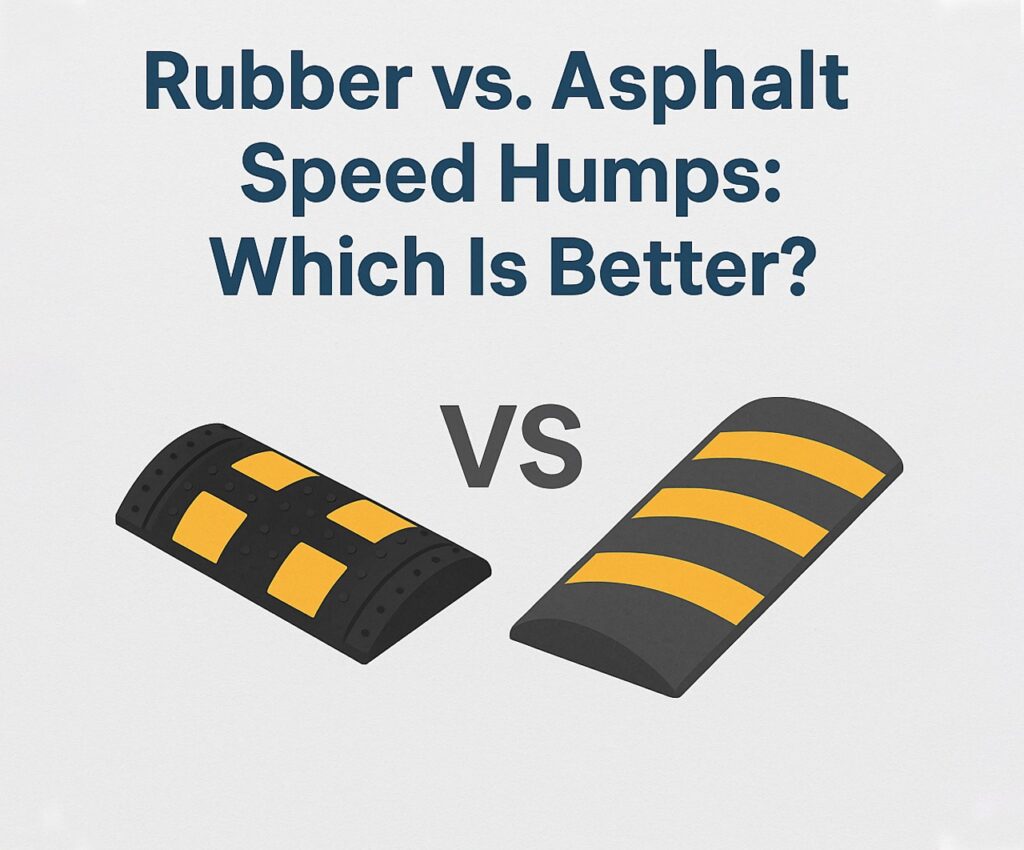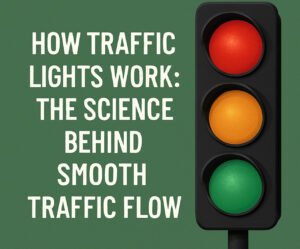If you’re involved in traffic control, city planning, or managing private lots, you’ve probably faced the question: rubber or asphalt? When it comes to calming traffic effectively, both materials have their place. Whether you’re researching asphalt speed hump detail, comparing rubber speed humps, or browsing rubber speed bumps for sale, making the right choice depends on several key factors — from cost to climate to installation time. Know more..
Let’s break it down.
Why Speed Humps Matter
Speed humps are one of the most effective tools for traffic calming. Unlike speed bumps — which are sharper and designed for low-speed zones — speed humps create a gentler rise that encourages slower speeds without bringing vehicles to a harsh stop.
They are commonly used in:
- Residential neighborhoods
- School zones
- Hospital driveways
- Parking lots
- Private communities
As cities and private developers expand their safety measures, choosing between rubber speed humps and traditional asphalt has become a serious decision — not just a quick install job.
Understanding Asphalt Speed Humps
An asphalt speed hump detail often includes the following:
- A wide, gradual elevation typically 3-4 inches high
- A length of 12-22 feet for smoother transitions
- Tapered sides to allow water runoff and prevent tire damage
Pros:
- Customizable: Can be molded to match the road’s slope or width.
- Durable: Long-lasting when properly maintained.
- Aesthetic Integration: Matches existing pavement seamlessly.
Cons:
- Installation Time: Requires skilled labor, curing time, and road closures.
- Cost: More expensive upfront due to materials and labor.
- Permanent: Removal or repositioning is difficult and costly.
Still, when municipalities request long-term infrastructure, detailed asphalt speed hump detail specs often guide public works projects for consistency and durability.
What About Rubber Speed Humps?
Modern rubber speed humps are pre-molded from recycled materials and are gaining serious traction in both urban and private applications. Available in various sizes, they’re often modular and come with reflectors and bright paint for visibility.
Pros:
- Quick Install: No road closure needed. Can be installed with simple tools.
- Removable: Ideal for seasonal or temporary applications.
- Cost-Effective: Lower upfront costs, especially for small areas.
Cons:
- Less Durable: More wear-and-tear in high-traffic or extreme temperature zones.
- Less Seamless: May not blend as well with the road.
- Limited Customization: Sizes are pre-made, which limits flexibility.
You’ll often find rubber speed bumps for sale at traffic safety suppliers catering to schools, retail centers, and gated communities looking for fast, flexible options.
Comparing Costs: Rubber vs. Asphalt
Cost is a big factor. Here’s a breakdown:
Rubber Speed Humps
- Upfront Cost: Lower. Around $100–$300 per section.
- Installation: Minimal tools. Done in under an hour.
- Maintenance: Easy to replace individual sections.
- Best For: Small lots, private roads, or areas needing temporary control.
Asphalt Speed Humps
- Upfront Cost: Higher. Includes labor, machinery, and materials.
- Installation: Requires multiple workers, lane closures.
- Maintenance: May require patching or reapplication over time.
- Best For: Public roads, long-term city projects.
If you’re working with a tight timeline or budget, rubber speed bumps for sale may be your go-to. But if permanence is the goal, it’s hard to beat the reliability of a well-built asphalt hump.
Speed and Traffic Control: Performance Comparison
Which one works better? It depends on the context.
Asphalt:
- Tends to slow vehicles to around 15–20 mph.
- Better suited for larger roads or throughways with consistent traffic.
- Ideal for integration into long-term traffic flow plans.
Rubber:
- Slows traffic to 10–15 mph.
- Great for narrow or mixed-use roads (like pedestrian-heavy areas).
- Works well in layered traffic plans (e.g., combined with signage or cones).
And remember, no matter how effective the hump is, it should always be paired with clear signage — often complemented by rubber speed humps that come with built-in reflectors for night visibility.
Environmental and Sustainability Factors
Here’s something people often overlook: rubber options are often made from recycled tires, making them an eco-conscious alternative.
- Rubber Speed Humps: Made from post-consumer waste. Lower carbon footprint.
- Asphalt: Can contain recycled materials, but the process itself is more energy-intensive.
If environmental goals are part of your project mandate, especially for LEED-certified buildings or sustainable communities, the availability of rubber speed bumps for sale becomes a meaningful option.
Weather and Climate Considerations
The climate you’re working in could heavily influence your decision.
Asphalt:
- Can crack in cold weather if not installed correctly.
- Susceptible to heat damage and softening in high temps.
Rubber:
- Handles cold and moisture well but can expand or deform in extreme heat.
- Great for temporary use in seasonal areas like ski resorts or beach towns.
So, if you’re in a place with wild temperature swings or intense UV exposure, you might want to mix and match materials based on specific needs.
Regulatory Compliance and Accessibility
Compliance with ADA standards, fire codes, and municipal regulations is a must.
- Asphalt speed humps can be designed to meet precise specs laid out in the asphalt speed hump detail guides used by local governments.
- Rubber speed humps often come pre-certified but may not meet every local code, especially in cities with stricter road standards.
Before purchasing, always check whether rubber speed bumps for sale are approved for public use in your area.
Installation and Maintenance: A Quick Look
Rubber:
- Installed using anchors or bolts.
- Easy to move, repair, or expand.
- Minimal disruption during installation.
Asphalt:
- Needs excavation, compaction, and proper curing time.
- Maintenance includes sealing, repaving, or fixing cracks.
- More disruptive during installation.
If flexibility is key — for events, seasonal changes, or pilot programs — rubber speed humps are the clear winner.
Final Verdict: Which Should You Choose?
Choose Rubber Speed Humps If:
- You need a fast install.
- The location is temporary or seasonal.
- You’re managing private property or a low-traffic zone.
- You’re shopping through vendors offering rubber speed bumps for sale for flexible deployment.
Choose Asphalt Speed Humps If:
- The road is public or high-traffic.
- You want long-term durability.
- You need to customize every asphalt speed hump detail for a perfect fit.
- You’re integrating the hump into broader infrastructure plans.
Conclusion
There’s no one-size-fits-all answer when it comes to choosing between rubber speed humps and traditional asphalt solutions. Your decision depends on factors like budget, usage, traffic volume, and long-term planning.
Whether you’re browsing rubber speed bumps for sale for a quick fix or diving deep into asphalt speed hump detail to meet city regulations, the best choice is the one that meets your specific goals — safely and efficiently.
Need help planning your traffic calming strategy? Start with your environment, budget, and traffic needs — and don’t overlook the long-term value of getting it right the first time.





